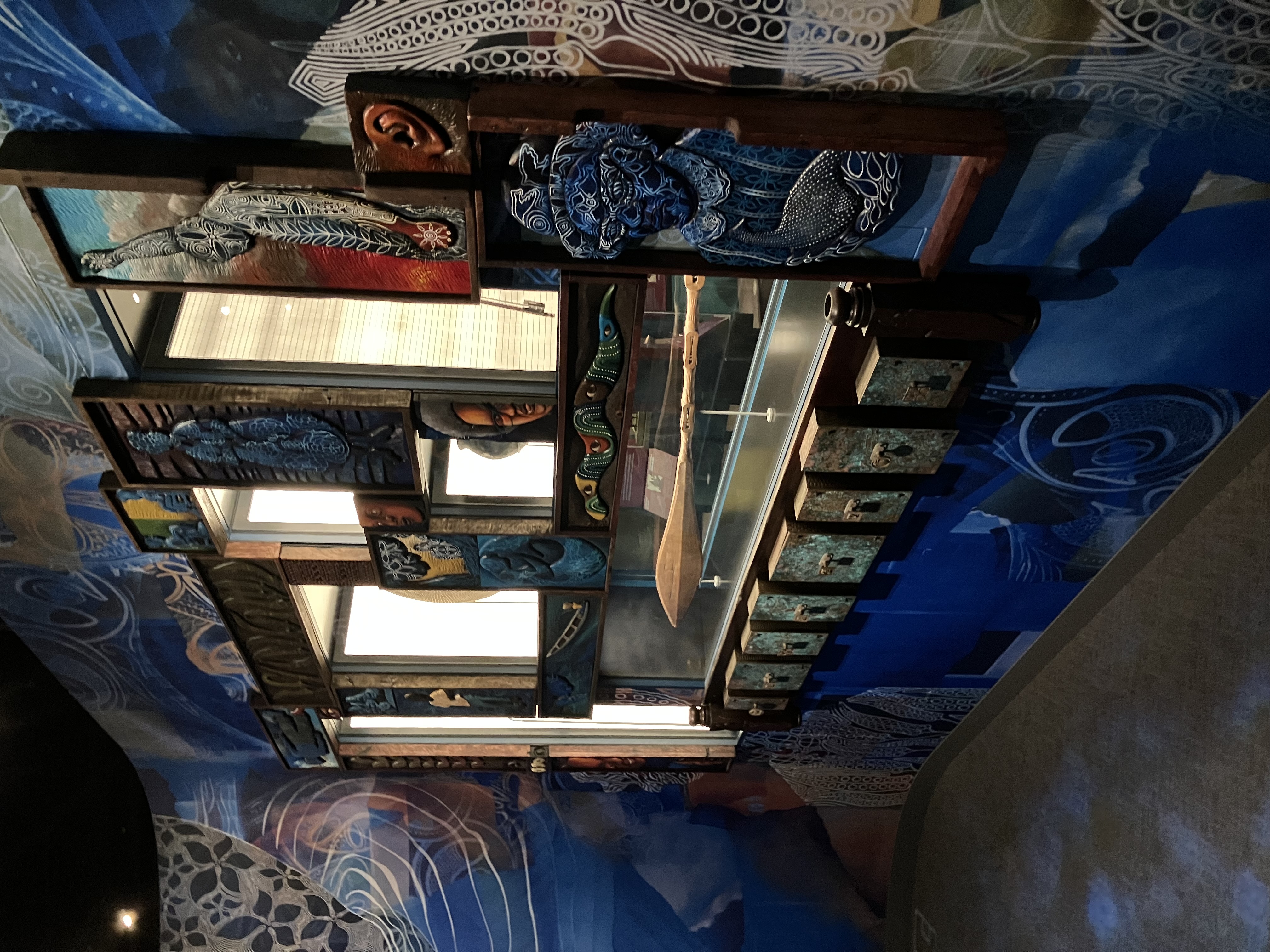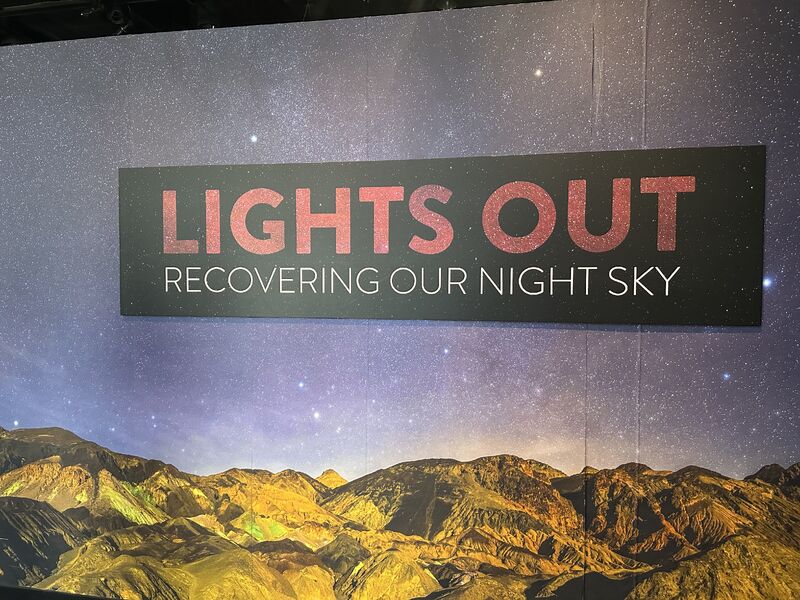By Professor Tiffany Banks On Tuesday, September 30th , students from my COMM 108: Foundations…
by Professor Matthew Decker
On April 17th, the Fellows began an emotional journey at the National Museum of African American History and Culture (NMAAHC). Joined by Auntaneshia Staveloz and Kelly Elaine Navies, Fellows were treated to a robust overview of the Museum’s mission-driven approach to collaboration, resource-sharing, and storytelling.

In “Making a Way Out of No Way: Empowering African American History and Culture Institutions through Authentic Partnership and Meaningful Engagement,” Staveloz, the Senior Manager of the Office of Strategic Partnerships, reminded us of the century-long effort that secured a space for NMAAHC on Constitution Ave. “The Time Has Come: Report to the President and to the Congress, National Museum of African American History and Culture, Plan for Action Presidential Commission” was a key document that ushered this dream into reality, and, one especially unique outcome, was that the museum would partner with other African American communities and institutions. Whether through advancing inclusion, creating jobs, fostering professional development, or other, Staveloz and her team collaborate with African American and African Diaspora History and Culture institutions. Historic Black Colleges and Universities, for example, as collecting institutions with their own museums, galleries, and archives, are core storytellers and collectors. It is not always easy to access these rich treasure troves of information, though, so partnering with NMAAHC can pave the way for digitizing content, discovering funding, and, ideally, broadening reach.
At the Vanguard: Making and Saving History at Historically Black Colleges and Universities is an outstanding example of this work in action. While the book is not yet available, the traveling exhibition opens in September and chronicles the artifacts of five HBCUs: Jackson State, Tuskegee, Florida A&M, Clark Atlanta, and Texas Southern Universities.
While I’m unable to capture the breadth of Staveloz’s talk and work in this week’s blog post, I’d like to highlight the National Museum of African American History and Culture’s mission statement, which emerged as an important branch of our shared conversation that dovetailed nicely with Navies’ presentation as well:
The National Museum of African American History and Culture captures and shares the unvarnished truth of African American history and culture. We connect stories, scholarship, art, and artifacts from the past and present to illuminate the contributions, struggles, and triumphs that have shaped our nation. We forge new and compelling avenues for audiences to experience the arc of living history.
The vocabulary alone is stunning and impactful, but the behind-the-scenes work both NMAAHC representatives spoke to truly emphasizes a commitment to “new and compelling avenues for audiences to experience the arc of living history.” Navies picked up this thread beautifully in her presentation “The Power of Storytelling: Social Justice Conversations.”

Navies, NMAAHC’s Museum Specialist in oral history, coordinates the Oral History Initiative, which is charged with documenting, preserving, and interpreting African American stories. Through a number of projects, Navies and her team have interviewed changemakers who were active within the Student Nonviolent Coordinating Committee or participated in The Poor People’s Campaign or donated artifacts to the museum itself or other. The recordings are truly special and—admittedly—a bit difficult to access. Navies explained that an upcoming renovation project on one of the museum floors will include a space where visitors can listen to oral history and even learn best practices in the method. Until then, I invite you to explore: YouTube and NMAAHC’s virtual collection.
Many of the oral histories you will discover online spotlight the interviewee’s personal prism of memory, which, as Navies shared, can be incredibly invaluable and revealing. They bore witness to difficult histories, persevered through strife, fought injustices, and dealt with indelible, traumatic legacies. At the close of our time with Staveloz and Navies, we engaged this final truth directly in a temporary exhibit, In Slavery’s Wake: Making Black Freedom in the World. If you have a moment, I encourage you to watch this brief clip, which echoes the messaging and even the sensory experience of the actual space. Upon entering the exhibit, the sounds of waves meet your ears, inviting you into a sacred but often difficult space for engagement and reflection. Stylistic rippling water illustrations guide the journey from there. A drum beat heard overhead seemingly builds in tandem with the raw intensity of the stories on display. It is a beautifully-realized emotional experience for visitors; most of the Fellows investigated the objects independently, in fact. I lingered at a station dedicated to women, including Roosje, Toya, and Anastácia, and learned about their stories of revolution and defiance.
can be incredibly invaluable and revealing. They bore witness to difficult histories, persevered through strife, fought injustices, and dealt with indelible, traumatic legacies. At the close of our time with Staveloz and Navies, we engaged this final truth directly in a temporary exhibit, In Slavery’s Wake: Making Black Freedom in the World. If you have a moment, I encourage you to watch this brief clip, which echoes the messaging and even the sensory experience of the actual space. Upon entering the exhibit, the sounds of waves meet your ears, inviting you into a sacred but often difficult space for engagement and reflection. Stylistic rippling water illustrations guide the journey from there. A drum beat heard overhead seemingly builds in tandem with the raw intensity of the stories on display. It is a beautifully-realized emotional experience for visitors; most of the Fellows investigated the objects independently, in fact. I lingered at a station dedicated to women, including Roosje, Toya, and Anastácia, and learned about their stories of revolution and defiance.
 With another Fellow, I also embraced a moment to bask in the glow of an arresting artwork: Universe of Freedom Making by Daniel Minter. While I was unable to find a higher quality image online, Minter discusses his vision in this Instagram post. Within, he mentions the tools and iconography that ultimately compose his installation, highlighting the “things [that] seem lost” but come back to us. “We get them back somehow,” he exclaims.
With another Fellow, I also embraced a moment to bask in the glow of an arresting artwork: Universe of Freedom Making by Daniel Minter. While I was unable to find a higher quality image online, Minter discusses his vision in this Instagram post. Within, he mentions the tools and iconography that ultimately compose his installation, highlighting the “things [that] seem lost” but come back to us. “We get them back somehow,” he exclaims.
Perhaps, in addition to the objects and resources leveraged and upcycled in his creative work, he is also referring to the stories that have been buried. They come back to us as well, through research, curation, creativity, design, memory, and many other efforts critical to the museum mission.





This Post Has 0 Comments